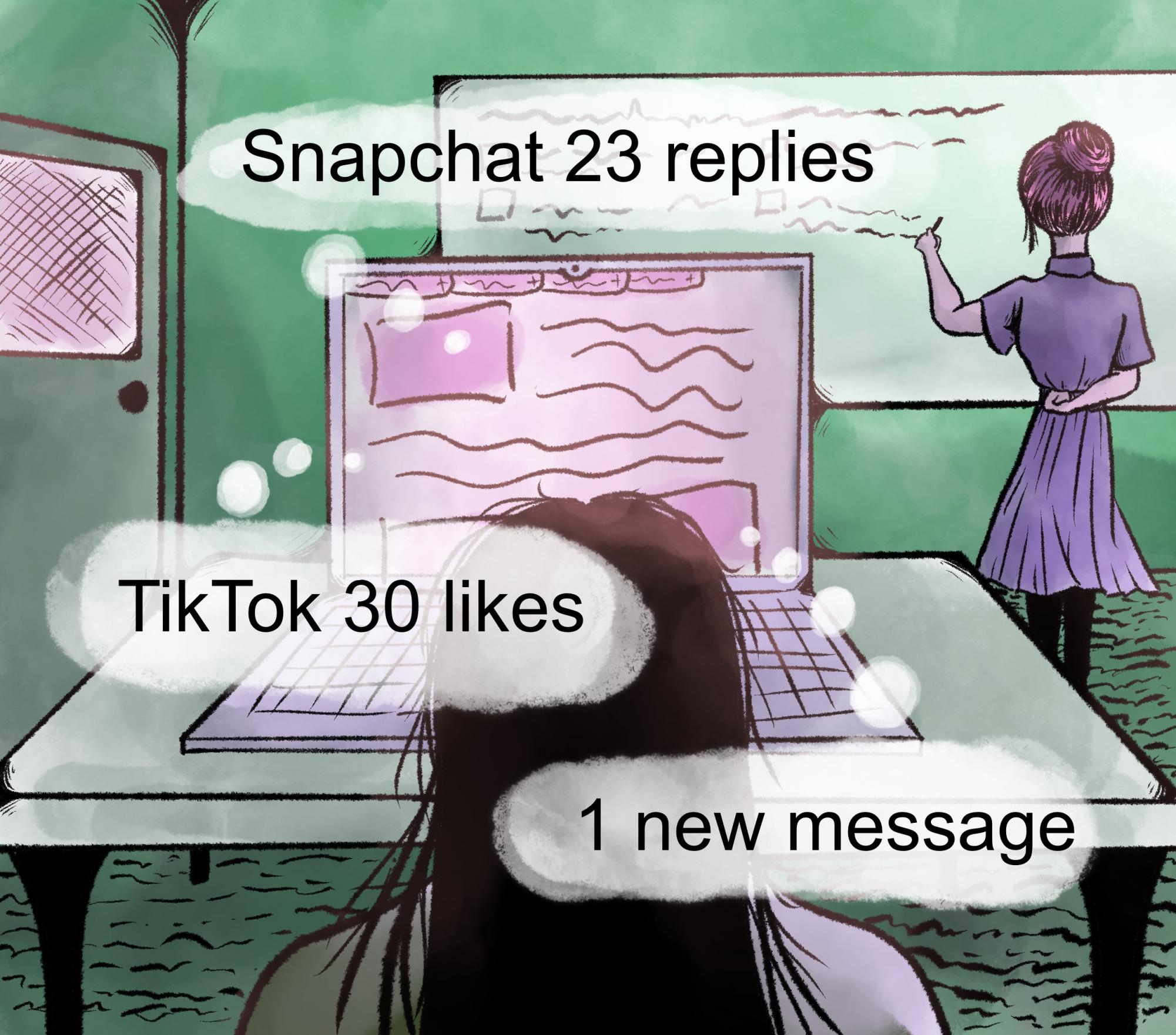“Some argue that Gatsby’s love was an example of true love, while others say—” Ding. Annette Logan opens the Snap: A face-shot of Marli Engel in front of UTC Mall. What a legend. How is she not in school right now? —”ut in the end, that second perspective on Fitzgerald’s protagonist is hotly debated. That Nick was in fact in love with Gatsby—” Ding. Hannah Winters, Annette’s bestie, posted a new story: A pic of Hannah holding a tall, cold drink at ReFresh Tea. — “and some say that love is clearly show in —”
This reenactment of a student going down the notification rabbit hole during a lesson on The Great Gatsby, although fictional, plays out in classrooms across the country, every single day.
Annette missing the point of that lesson may be a drop in the bucket, but on the macro scale, technology and social media have become a major distraction to students in the classroom.
It’s no secret that teenagers are highly active on social media. But their constant engagement, even during school hours, has made focusing on instruction near impossible. With the overwhelming barrage of notifications on their devices from messaging and social media apps, it’s easy to see how students lose track of the material at hand.
According to a study conducted by the University of Michigan Health and Common Sense, “On a typical day, teens in a recent study received about 240 phone app notifications, with a quarter of these messages arriving during school hours and another 5% at night.”
The study, which followed a sample of 203 teens from 13-17, shows that students, during their waking hours receive at least 15 “notifications” an hour, pop-ups that slide down on their devices, beckoning them to respond, react, and engage.
Some may say that phones aren’t a problem for many at schools, as the devices aren’t out during class times. But that doesn’t really matter. iPads, laptops and computers can all connect to Snap, messages, and even TikTok, and those notifications “pop up” on every screen, not just phones.
There are others that may argue that “notifications are bad” is a “Boomer” perspective, claiming that kids have adapted to constant engagement, and can still stay on track. But the data begs to differ.
A survey done at the University of Waterloo, showed that 49% of undergraduate students said the use of technology for reasons not related to class was distracting to them.
Upper School English teacher Mr. Blake Hoonhout pointed out that notifications are equally distracting for students and teachers alike.
“When I’m working with students in an English class, helping them through edits, it’s not uncommon for six different banner notifications to slide down the screen with messages or snaps or Instagram,” Hoonhout said. “It drives me crazy. It must drive the student crazy, too.”
Students feel the strain, too. Victoria Neiva, a senior, shared how distracting notifications affect her focus during classes.
“I’ve tried turning off notifications during school, and it’s made a big difference,” Neiva said. “At first, I felt like I was missing out, but after a while, I realized how much more I was absorbing in class. It’s honestly worth the switch.”
Fast forward to Annette (our notification culprit from the beginning of this story) sitting down at her Final Exam in English. The exam, an essay prompt not given until the day of, is laid down on the table.
She reads the question: “How do Fitzgerald’s characters’ complex relationship connect to issues in modern times?” Annette shakes her head. She has no idea. The only thing that comes to mind? “ReFresh Tea.”
Annette didn’t do so well on that final, and neither will you if you let 240 notifications pop up every day. Students would be doing their future selves a favor by hitting “mute” on their notifications, and giving their full attention to their school work.



Luke Ribeiro-de Sá • Oct 27, 2024 at 10:28 pm
Let’s go SB! This is a really good article!!